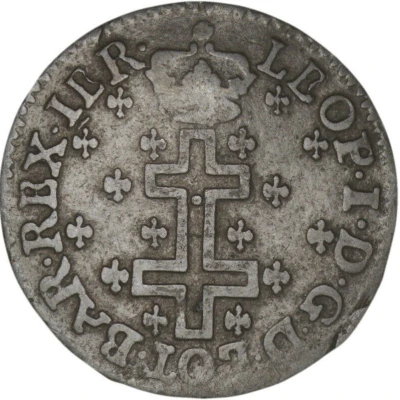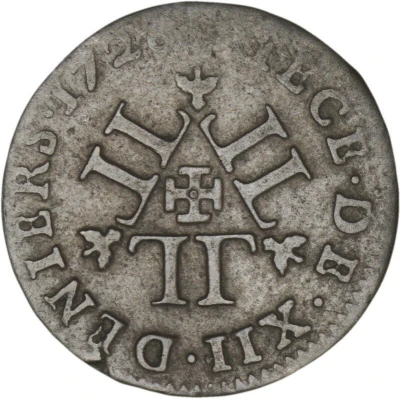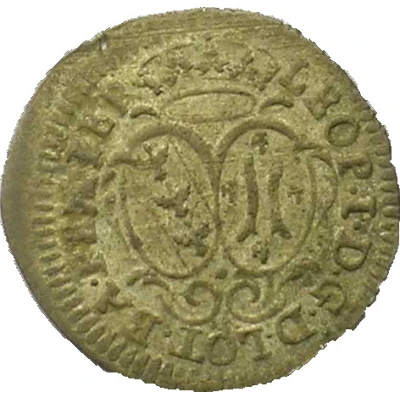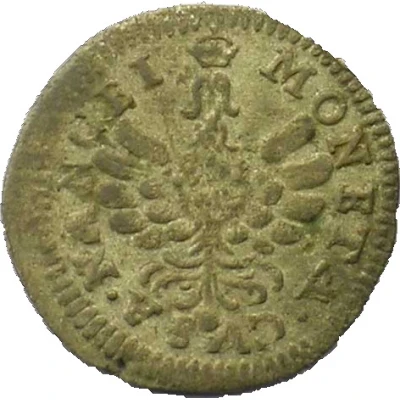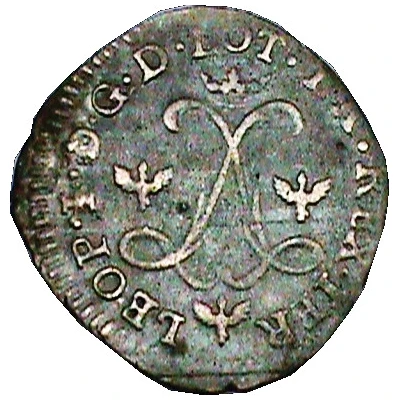
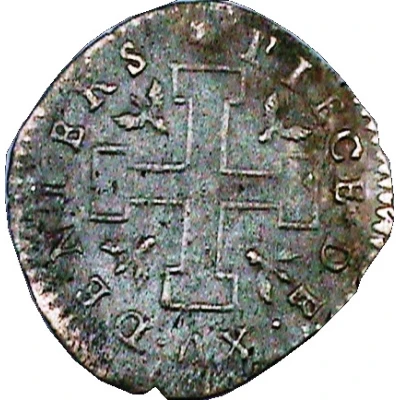

© Alema66
15 Deniers - Leopold I ND
| Billon (.166 silver) | 1.2 g | 20 mm |
| Issuer | Duchy of Lorraine (French States) |
|---|---|
| Duke | Leopold (1697-1729) |
| Type | Standard circulation coin |
| Years | 1697-1729 |
| Value | 15 Deniers (1⁄16) |
| Currency | Pound of Lorraine (1700-1737) |
| Composition | Billon (.166 silver) |
| Weight | 1.2 g |
| Diameter | 20 mm |
| Shape | Round (irregular) |
| Orientation | Medal alignment ↑↑ |
| Demonetized | Yes |
| Updated | 2024-10-04 |
| Numista | N#64406 |
|---|---|
| Rarity index | 87% |
Reverse
Jerusalem Cross with an alerion in each angle.
Script: Latin
Lettering: PIECE DE XV DENIERS
Translation: Coin of 15 Deniers.
Edge
Plain
Comment
Leopold I is the son of Charles V (1642-1690), a lackland duke. Unlike his father, he managed taking back his Duchy after the Ryswick treatees signed on October 30th, 1697. The following year he spoused Charlotte of Orleans, niece of Louis XIV of France, making Leopold I torn in two, between his 2 families: in one side, the French reigning family of his wife, and in the other side, his own family, whose uncle and cousins ruled over the Archiduchy of Austria and as Holy Roman Emperors.This coin denomination is written in French, proof of the growing influence of the Kingdom of France over Lorraine.
Even Lorraine was simply a Duchy, the Duke Leopold Ier wore the title of King on his coins, plaiming himself heir of Godefroy de Bouillon, former King of Jerusalem. This also explains the use of a Jerusalem cross on the reverse.
Interesting fact
The 15 Deniers coin from the Duchy of Lorraine, featuring Leopold I, was minted during a time of significant economic and political change in Europe. The coin's minting was likely a response to the growing need for a standardized currency system, as the Holy Roman Empire was dissolved and various states began to issue their own coins. The use of Billon, a silver-copper alloy, was also a common practice during this time period, as it was more durable than pure silver and helped to prevent counterfeiting.
